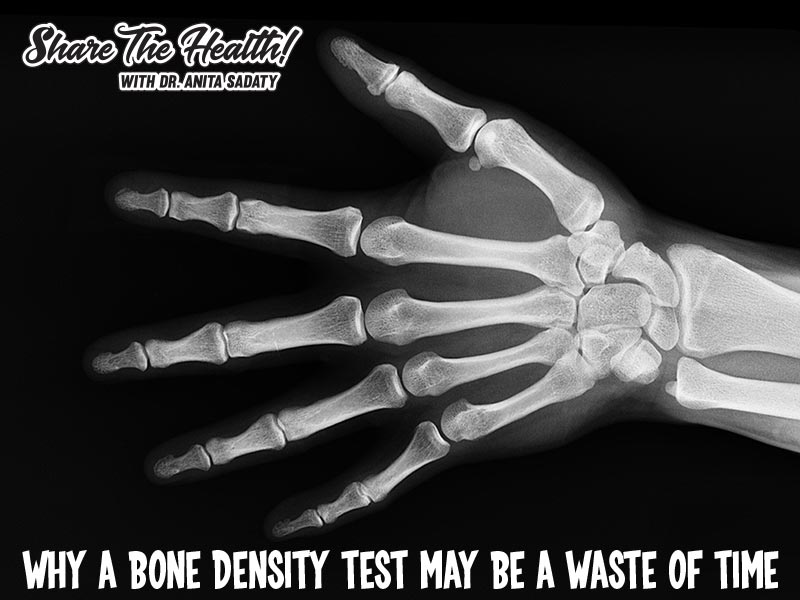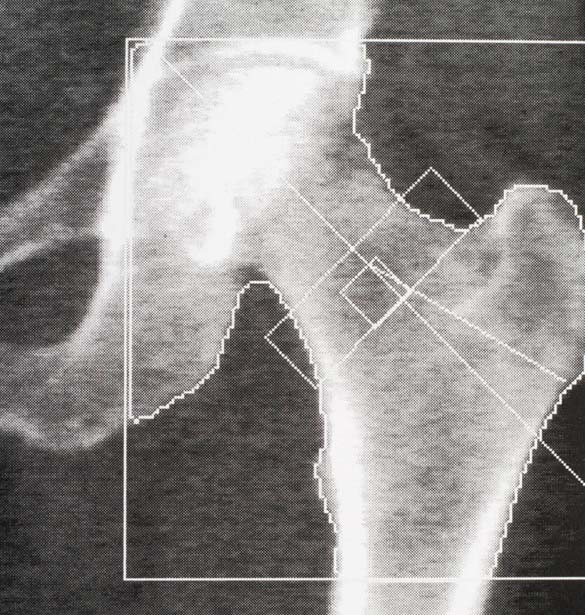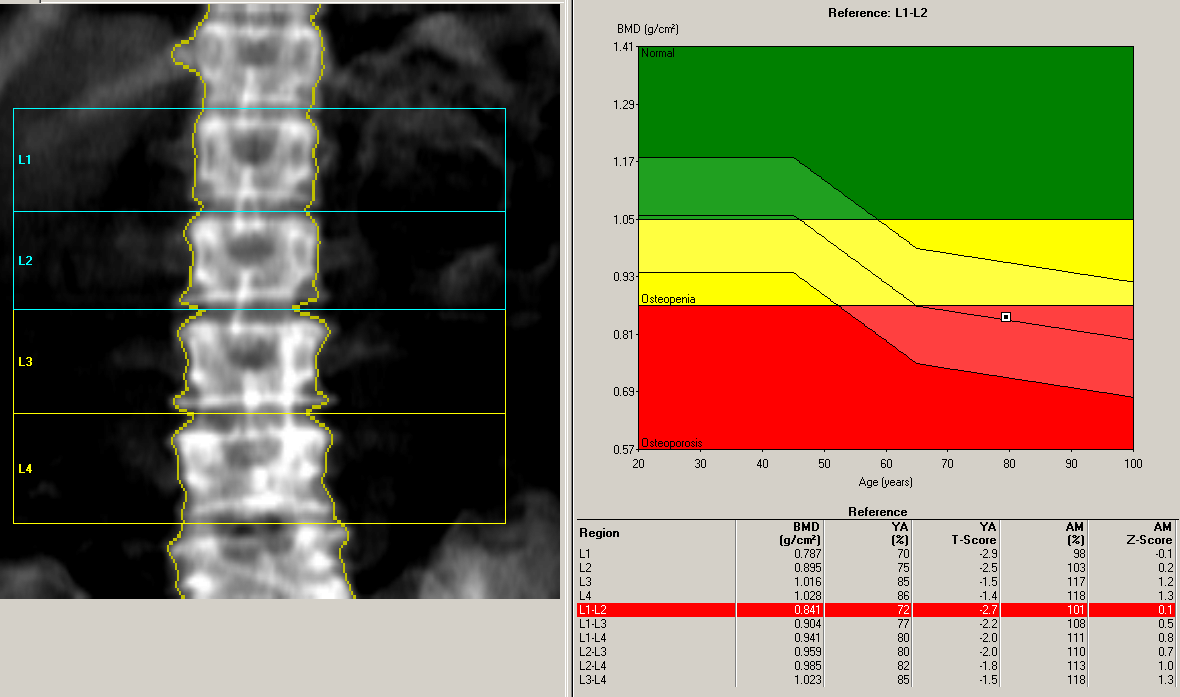

It is a standard method for diagnosing osteoporosis used in combination with risk factors (the so-called “FRAX” method), it is also considered an accurate way to estimate fracture risk.ĭXA works by sending two low-dose X-rays which are absorbed differently by bones and soft tissues.
#Bone density test results how to#
Want to learn more about how to interpret your bone density test results? Take my e-course: How to Understand Your Bone Density Test & What It Means for You.Dual-energy X-ray absorptiometry (DXA or DEXA) is a scan that is used to determine the density of bone to assess its strength. This is not the first case where a medical test appears accurate and reproducible in highly controlled studies, but later is shown to be much less reproducible in real-life clinical practice.Īnd here’s the moral of the story: as far as bone density testing goes, “Don’t sweat the small stuff!” Clearly, the difference is built into the test’s error margin. It’s obvious that Ken isn’t losing so much bone in his hip and gained noteablebone in his spinein just 11 days. – The neck of the hip bone density was 4.10% lower than on the first test. – The spine bone mineral density was 2% higher than on the first test. Ken’s bone mineral density tests, done less than 2 weeks apart, showed a significant difference: They both felt it must be a testing error, so Ken underwent a second bone density test just 11 days after the first in the exact same medical facility. Both Ken and his doctor were very taken aback when Ken’s bone density test results came back extremely low. No density tests had been done until recently, when his new doctor suggested they do one. He had suffered several fractures in the past, but no new fractures in five years. Ken came to the Center for Better Bones seeking to improve his bone health. Bone density test results: a cautionary taleĬonsider Ken’s story.

From her analysis, she found that we need to see a change of more than 6% to be certain of a statistically significant change in density. Susan Ott, a well-known osteoporosis specialist, did just that - she placed 300 people on her machine, measured their bone mineral density, had them walk around the room, then did another bone density test. You can put a person on the testing machine, measure them, walk them around the room, then measure them again, only to find a significant difference between the two measurements - even using the same machine. The assumption that bone density is the same as bone strength has long since been proven false: many, if not most, low trauma fractures - the hallmark of osteoporosis - do not have an “osteoporotic” bone density as defined by a T-score of –2.5. Also, today’s testing is very influenced by bone area - which means that lightweight and small-boned people come up with lower bone density readings than heavier folks with larger bones.Īnd then there is the fact that in everyday clinical practice the tests are not highly reproducible. And they can’t detect bone strength, which matters more than density. In the first place, the tests do not actually measure bone density they simply estimate the mineral content of bone. The science of bone density testing leaves much to be desired. What bone density measurements really mean So, take a deep breath, and let me explain another way to look at small changes in bone density measurements. The problem is, they’re being needlessly frightened in everyday clinical practice, one finds that these tests are not that accurate or reproducible. Nearly every day at the Center for Better Bones, I hear from people frightened by small changes in their bone density test. I’ll end up fracturing just as the doctor suggests - perhaps even permanently handicapped!” If you’re like most of my clients, your mind immediately goes in to self-critical mode: “Oh, no! What I’m doing isn’t working. The doctor says - forcefully - that you’re in danger of fracturing with this continued bone loss and recommended a bone drug for you to begin taking. The doctor reports that since your last exam 3 years ago, your bone density test results show that you’ve lost 4% in your spine and 2% in your hip.

So, you just had a follow-up bone density test, you’re frightened and disheartened. Vitamin K research at the Better Bones Foundation.Vitamin D research at the Better Bones Foundation.Research and publications on acid-alkaline balance.How to support the Better Bones Foundation.Geriatric fracture reduction and the special nutrient needs of the elderly.Current research at the Better Bones Foundation.Completed research at the Better Bones Foundation.Scholarly articles and research reports.Noteworthy new publications on acid-alkaline balance.Acid-alkaline balance: general research articles of interest.Acid-alkaline balance and bone health: research articles of special interest.


 0 kommentar(er)
0 kommentar(er)
